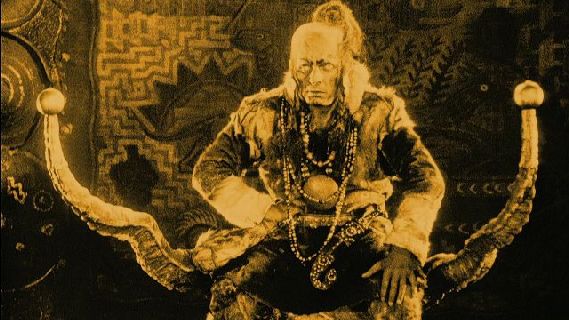Die Nibelungen: Kriemhild’s Revenge (1924) 

Director: Fritz Lang
Cast: Margarete Schön, Gertrud Arnold, Theodor Loos
Synopsis: After her husband is killed, Kriemhild develops an intricate revenge plot.
Kriemhild’s Revenge, the second part of Die Nibelungen, Fritz Lang’s insanely ambitious adaptation of the 11th Century epic poem Nibelungenlied, was originally released as a single film (screened over two evenings) in its home country, but was released as two separate movies elsewhere. Separate viewings probably work better, because each film is a distinctly unique beast, the tone and themes of which share few similarities. Die Nibelungen: Siegfried, the first movie, is a mythical fantasy featuring dragons, dwarfs, and infinity cloaks, while Kriemhild’s Revenge is a dark tale of obsessive revenge bordering on insanity. A distance between viewings of the two movies would undoubtedly soften the transformation Kriemhild undergoes — from naive and gullible naif in Siegfried to ruthless villainess in Kriemhild’s Revenge.
Kriemhild’s Revenge sees the eponymous widow (Margarete Schön) accepting an offer of marriage from the gnome-like Attila (Rudolf Klein-Rogge — Metropolis, The Testament of Dr Mabuse), King of the Huns, despite still being consumed with grief over the death of her husband, Siegfried. She has no love for Attila, and accepts his proposal purely as a means of exacting revenge on Hagen Tronje (Hans Adalbert Schlettow – A Cottage on Dartmoor) whom her brother, Gunther (Theodor Loos — The Testament of Dr Mabuse, Jew Suss), the King of the Nibelungens, refuses to punish for the murder of Siegfried. When Kriemhild bears Attila a son, the overjoyed Hun grants her a wish, and Kriemhild’s response is that her three brothers be invited to dine in Attila’s palace. The brothers warily accept the invitation, and Hagen Tronje is among those in attendance, meaning everything is in place for Kriemhild to at last exact her revenge upon him.
The death of Siegfried marks a turning point not only in the personality of Kriemhild but in the tone and pacing of the story to such a degree that, after the fantastic elements of the first film, watching the first half of Kriemhild’s Revenge is like sitting through a particularly dull and dry history lesson. Whereas the first half of the saga focused on the adventures of Siegfried, the second part becomes more introspective, dwelling on the heavy toll of Kriemhild’s mounting obsession with exacting revenge upon Hagen Tronje. She makes for an unsympathetic heroine, aloof and unyielding, and spends most of her time staring sternly into the distance as those around her are slowly alienated by her unyielding thirst for vengeance. In fact, this is perhaps the film’s biggest flaw — there is nobody here for the audience to side with. Kriemhild has suffered a terrible injustice, but she’s cold and clearly touched by madness; her brothers — Gunther, in particular — are weak and indecisive, and show little concern for their sister’s plight. Ironically, it’s Attila the Hun, usually portrayed by filmmakers as a bloodthirsty barbarian, who is the closest that Kriemhild’s Revenge has to a sympathetic character. He at least clearly loves both Kriemhild and his child, whereas Kriemhild seems to look upon their son merely as a tool with which she can lure Tronje into a trap.
The film looks incredible; impressively staged on an epic scale, its’ superb restoration gives prominence to the obvious care and attention lavished upon the set and costume design. And after that plodding first act, things begin to gather pace, climaxing in a remarkable third act siege which sees Attila’s hordes, spurred on by a wild-eyed Kriemhild, mounting repeated attacks upon the dwindling band of Nibelungens seeking refuge in Attila’s Hall. There’s a dour inevitability to the outcome, however, which might well leave some with a vague sense of dissatisfaction.
(Reviewed 9th August 2014)
httpv://www.youtube.com/watch?v=45-8eZViYOE
